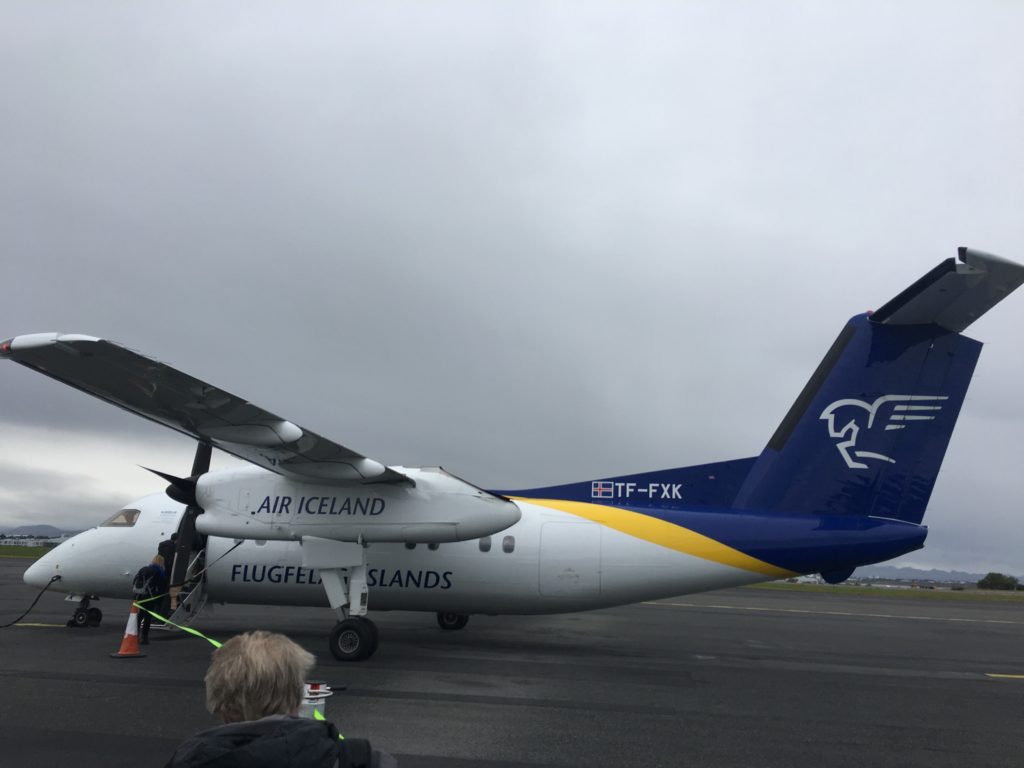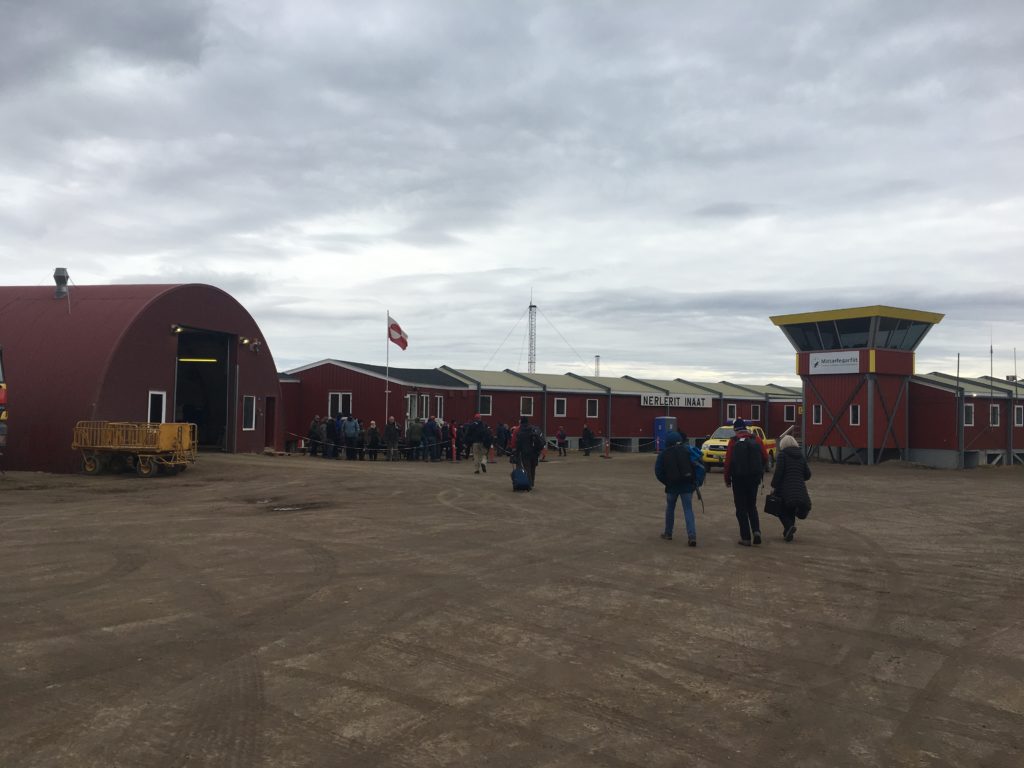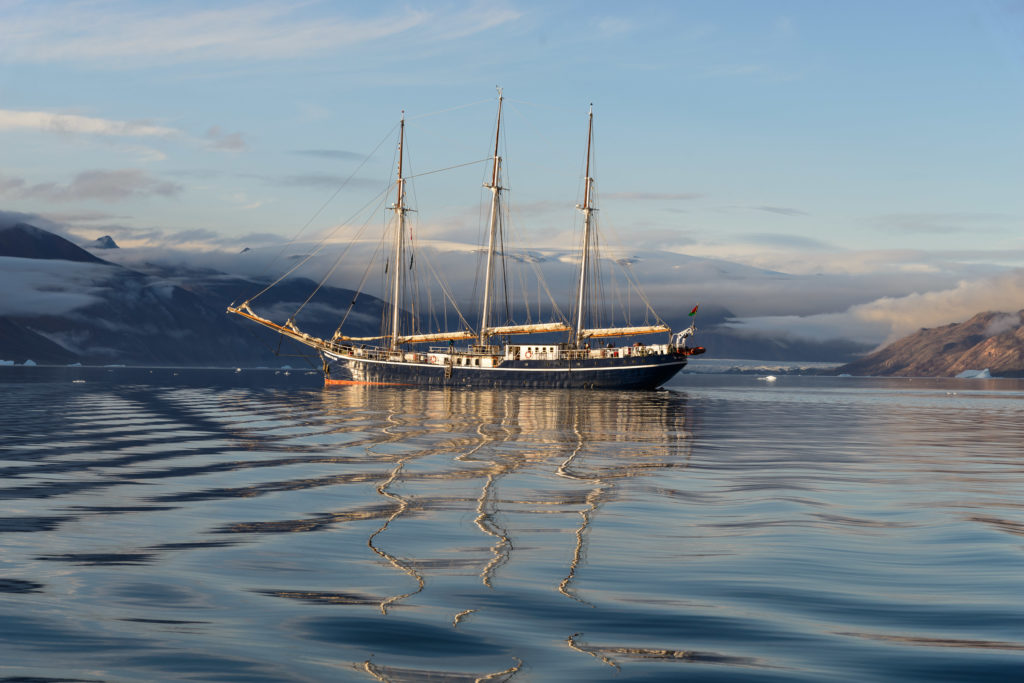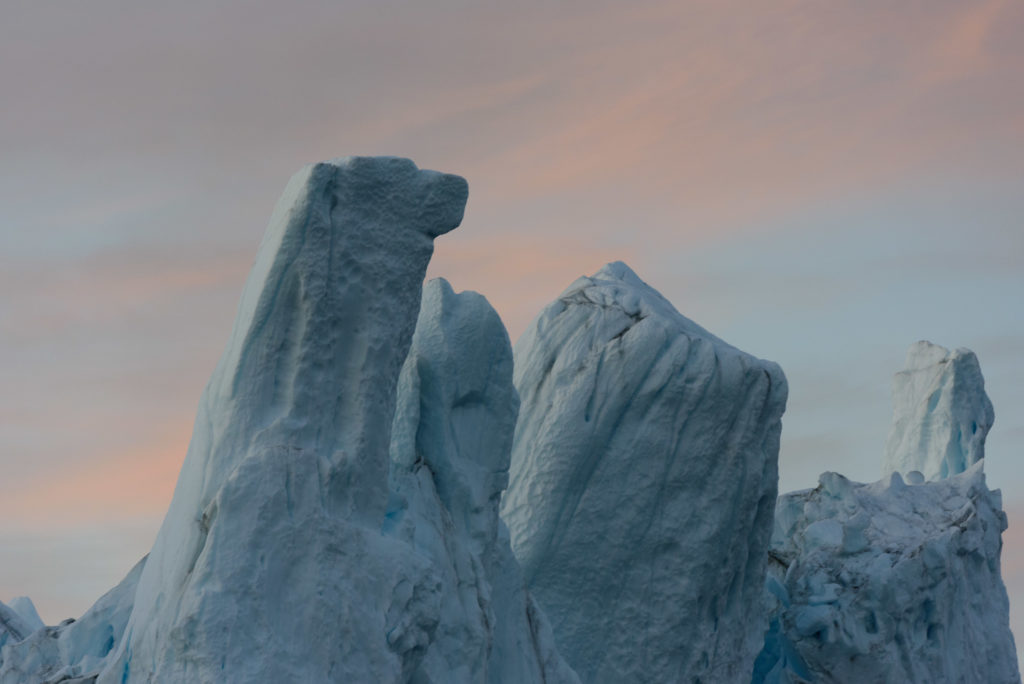In September of 2017 I had the opportunity to spend 10 days in the arctic on the east coast of Greenland. This post is the first in a series about that trip.
Getting There
Greenland is a difficult place to get to. There are not many large, international airports that can support large aircraft. Within Greenland, not all airports can easily connect to others. Air Greenland doesn’t even have a flight from the capital, Nuuk, to Constable Point (CNP) airport.
As a result, to get to Constable Point airport, I ended up having to fly through Reykjavik city airport. For my flight, our group chartered the plane. This helped to ensure that baggage weight limits were less of an issue. The plane was not full, and many camera bags ended up with their own seats.
Constable Point, near the bustling city of Ittoqqortoormiit (population ~300) is a dirt runway at the entrance to Scoresbysund, the largest fjord system in the world.
From here, I boarded a boat. A fairly small boat, the S/V Rembrandt Van Rijn, a 3-masted schooner. This was to be home for the next 10 days.
In this series, I’m going to talk about what it was like, how it was different from most trips, how I managed to find myself here, and share some stories.
I hope people find this interesting. Although it was really a once in a lifetime kind of trip, writing this post has made me really want to go back.



Onboard the Van Rijn
This was my first ‘expedition photography trip’. This is very different from my normal kind of trip.
On a normal trip, if you forgot something, or if something breaks, you can probably replace it. On this trip, we were several days away from even a rescue in the event of injury or illness. I had at least 2 of everything, including boots. You need to be prepared for anything to break, or get soaked, or otherwise be unusable.
The video to the left is taken from day 5, or around the midpoint in the trip. It shows a typical late afternoon / evening onboard. Most mornings and evenings where the zodiacs were not used were like this. We’d spend hours per day on deck photographing mountains with icebergs. The warm quality the light in the arctic during the evening is hard to describe. In the mid-day, the light is very harsh and the icebergs reflect a lot of light, which for me had an effect like snow blindness if I didn’t have sunglasses on.
Most mornings started around 5:30 or 6, with our German hostess telling us to have a ‘Beautiful good morning’. Our first and second mornings had some of the most incredible sunrises of the trip, perhaps some of the most amazing sunrises I’ve ever seen. These two mornings really ruined us for the still very nice, but not quite as amazing, mornings later in the trip.

What a first morning!
The first morning could not have been better if we planned it.
Somedays the fates align and you have unbelievable conditions. This first morning was one of these days.
The light at the high latitudes has different qualities to what most of us experience. There is often a very soft feeling, much like a late-fall kind of light. Due to things I do not fully understand, circular polarizers, a very common filter in landscape photography, do not have much of an effect in the polar regions. I brought a C-PL, but ended up using it as a Neutral Density more than anything else.
On the first morning, everything lined up for us. The sun had just enough clouds for a fiery first light. The mountains were positioned perfectly with icebergs in front. The boat was moved around to chase the best pieces of ice and get the perfect light.
Sunrise on the first day was an amazingly fiery show.
Even now, several years later, It was still one of the most intense and amazing sunrises that I have ever seen.
It could not have been better if it were planned.
These Early trip sunrises ruined us for the later sunrises.
The boat was moved around as the light changed to keep all of the photographers in just the right spot.
The mountains, the icebergs, the clouds, everything, just lined up perfectly for an amazing morning.
Cruising Around the Giants
Many mornings would start with a cruise around the icebergs
If you’ve never motored around icebergs, it is a surreal experience.
Overall, It is very silent experience. For the most part, there is just the sounds of the boat as it moves through the water.
Everywhere you look, giants are floating by in silence. Many of the icebergs were not floating. They were so massive that they were resting on the seafloor – 200m below us. Some of these icebergs were as large as 300m x 300m with about 100m above the water and 200m or so below the water. Or in other words, since 300m is about 1000 ft, these icebergs are roughly 1 billion cubic feet.
Every so often you hear what sounds like a gunshot, echoing around the fjord. This sound is the sound that happens when the ice breaks apart. Because the sound bounces and echoes so much, it is difficult to know what direction the sound came from.
On at least one shore landing, we heard a loud noise echo around the fjords. About 10 seconds later, one of the guides shouted ‘get away from the water’. This is a safety precaution. When ice breaks, or ‘calves’, it can create waves, which are quite dangerous.
I hope you enjoyed this post, which is more of a story than normal. This series will continue in about a week – posts like this take a long time to write and construct.
Until next time-
-Brad